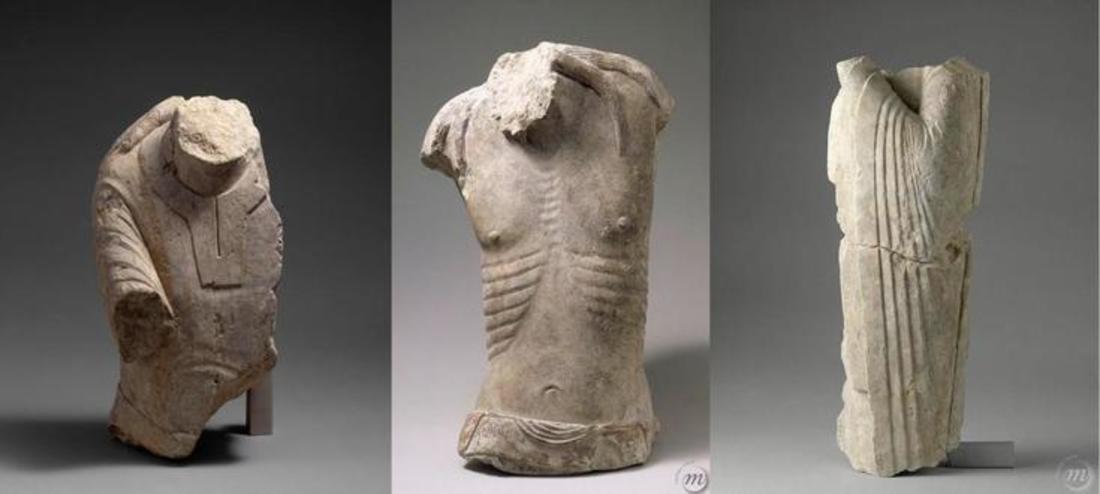The central figure is that of Christ, of whom only the torso remains. He can be recognised thanks to his long hair and the simple cloth tied around his waist, known as the perizoma. The sculpture is tilted backwards: the is the scene of the Deposition, which comes after the Crucifixion.
The two very similar side statues may represent Nicomedes and Joseph of Arimathea. According to the New Testament, it was these two men who helped to remove Christ's body from the cross. Christ's hand can be seen on the shoulder of the bust to his right. These works have comparable dimensions. Logically, we have long considered that they came from the same set.
But, take a closer look at the style of these sculptures … Their quality is not the same! The two side characters present a typically Roman style of sculpture, particularly in the depiction of clothing with fine folds and parallels.
Christ's torso, on the other hand, is much more exceptional! The sculptor, while skilfully stylising forms, has shown great delicacy in their anatomical rendering.
Still not convinced? Recent restoration has taught us that the Christ was carved from a different stone and that it has never been exposed to the outdoors, unlike the other fragments. Proof that these sculptures came from two groups – undoubtedly very closely related in their composition and both representing the Deposition, but certainly different!
Detail:
Great skill is demonstrated in the modelling of the pectorals and sternum on Christ's torso. The ribs, hair and drapery chiselled into the stone are deliberately more schematic. A few traces of pink on the torso and blue on the clothing remind us that the work was originally polychromatic.

The central figure is that of Christ, of whom only the torso remains. He can be recognised thanks to his long hair and the simple cloth tied around his waist, known as the perizoma. The sculpture is tilted backwards: the is the scene of the Deposition, which comes after the Crucifixion.
The two very similar side statues may represent Nicomedes and Joseph of Arimathea. According to the New Testament, it was these two men who helped to remove Christ's body from the cross. Christ's hand can be seen on the shoulder of the bust to his right. These works have comparable dimensions. Logically, we have long considered that they came from the same set.
But, take a closer look at the style of these sculptures … Their quality is not the same! The two side characters present a typically Roman style of sculpture, particularly in the depiction of clothing with fine folds and parallels.
Christ's torso, on the other hand, is much more exceptional! The sculptor, while skilfully stylising forms, has shown great delicacy in their anatomical rendering.
Still not convinced? Recent restoration has taught us that the Christ was carved from a different stone and that it has never been exposed to the outdoors, unlike the other fragments. Proof that these sculptures came from two groups – undoubtedly very closely related in their composition and both representing the Deposition, but certainly different!
Detail:
Great skill is demonstrated in the modelling of the pectorals and sternum on Christ's torso. The ribs, hair and drapery chiselled into the stone are deliberately more schematic. A few traces of pink on the torso and blue on the clothing remind us that the work was originally polychromatic.